Here’s a look at some stunning yellow annual flowers that thrive in full sun, along with helpful tips for growing them successfully.
Yellow Pansies
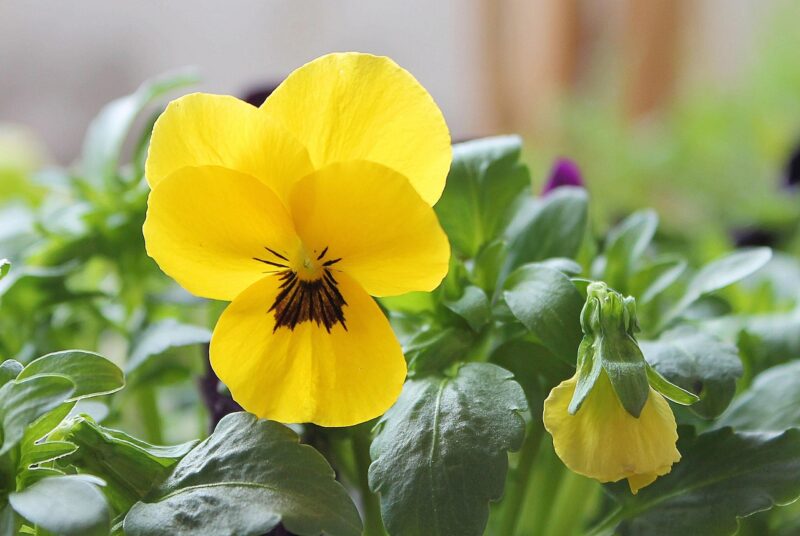
Pansies are iconic spring and fall flowers that bring a splash of color to any garden. Though they come in various hues, yellow pansies stand out with their bright, inviting petals. Pansies prefer cool temperatures, making them lovely companions for spring gardens. They bloom in various forms, with striking patterns and shades that blend seamlessly into sunny borders.
To grow pansies, select a well-drained location with direct sunlight in the morning and dappled shade in the afternoon. These flowers thrive in rich, loamy soil and require consistent watering, especially during dry spells. Regular deadheading (removing spent flowers) encourages more blooms, prolonging their vibrant display throughout the growing season.
Bidens

Bidens is a lesser-known but enchanting flowering plant, highly regarded for its resilience and ability to flourish in full sun. Featuring soft, feathery foliage and bright yellow flowers, bidens can create a delightful carpet of sunshine in garden beds or hanging baskets. This flower is particularly attractive to bees and butterflies, making it an excellent choice for pollinator gardens.
When planting bidens, ensure your soil is well-draining to prevent waterlogging. These flowers are tolerant of drought once established, making them perfect for low-maintenance gardens. Bidens can bloom from spring until the first frost, ensuring that your garden remains cheerful even as summer fades into autumn.
Marigolds
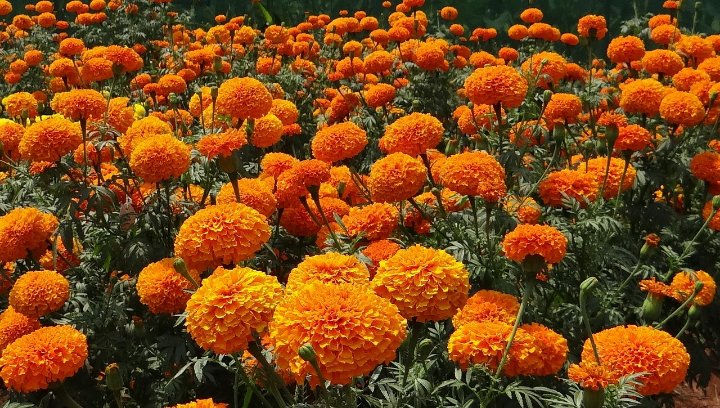
Marigolds are a classic choice for sunny gardens, renowned for their intense yellow and orange hues. They are hardy annuals that not only brighten a flower bed but also act as natural pest deterrents. These cheerful blooms are easy to grow from seeds, making them a favorite among beginners and seasoned gardeners alike.
To cultivate marigolds, plant them in fertile, well-drained soil, ideally in a location that receives at least six hours of sunlight a day. Water them regularly, particularly during dry spells, but take care not to overwater. Deadheading spent blooms will encourage new flowers to emerge, ensuring a long-lasting display of bright yellow.
Calendula
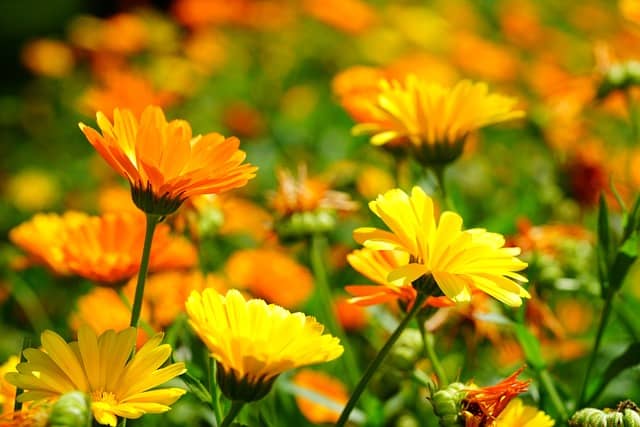
Calendula, also known as pot marigold, boasts vibrant yellow and orange blossoms that can light up any garden. This resilient flower is not only beautiful but also edible, making it a fantastic addition to both ornamental and edible gardens. Calendula attracts pollinators and is celebrated for its medicinal properties.
When growing calendula, plant them in well-drained soil with consistent moisture. They thrive in full sun but can tolerate partial shade. These flowers can bloom from early spring until frost, providing a cheerful touch throughout the season. Regular deadheading and fertilization will enhance their growth and flowering duration.
Yellow Petunias
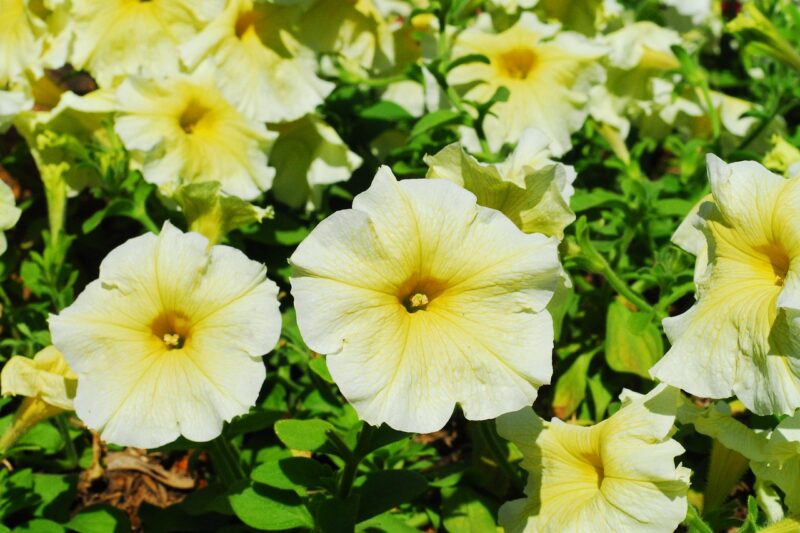
Petunias are beloved for their versatility and vibrant color range, with yellow varieties adding a bright focal point to gardens. These blooms can cascade beautifully in hanging baskets or serve as a stunning border plant in flower beds. With their richly textured petals and captivating fragrance, petunias can transform any space into a floral sanctuary.
For optimal growth, plant petunias in well-drained soil and ensure they receive ample sunlight—ideally about six hours per day. Regular watering is crucial, especially in hot weather, but be cautious of overwatering. Deadheading will promote more blooms, enhancing the longevity of your petunia display throughout the season.
Calibrachoa
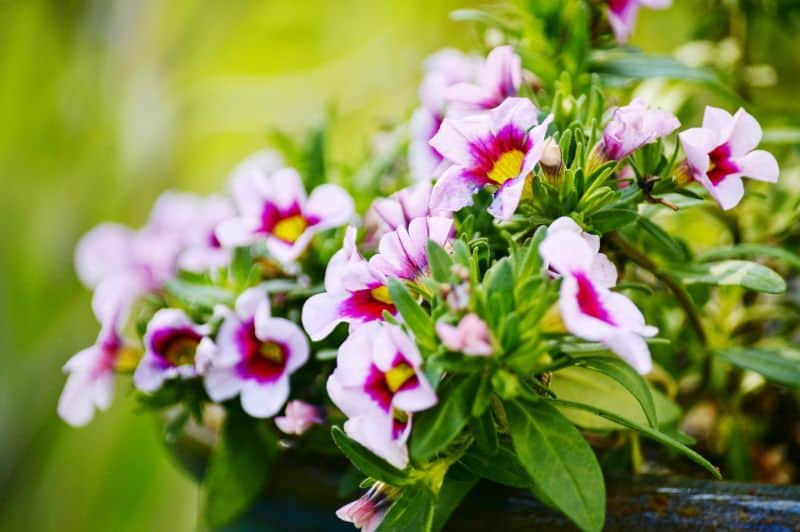
Often mistaken for petunias due to their similar appearance, calibrachoa, or “million bells,” are another excellent choice for sunny spots. These flowers produce an abundance of small, vibrant yellow blooms that add a cheerful aura to any garden space. Their trailing nature makes them perfect for hanging baskets, containers, and window boxes.
Calibrachoa thrives in well-drained soil with plenty of sunlight. Water them consistently, ensuring the soil remains moist but not soggy. Fertilizing every few weeks will encourage even more flowering. With regular care, calibrachoa can bloom all summer long, offering continuous joy to gardeners and visitors alike.
Cannas
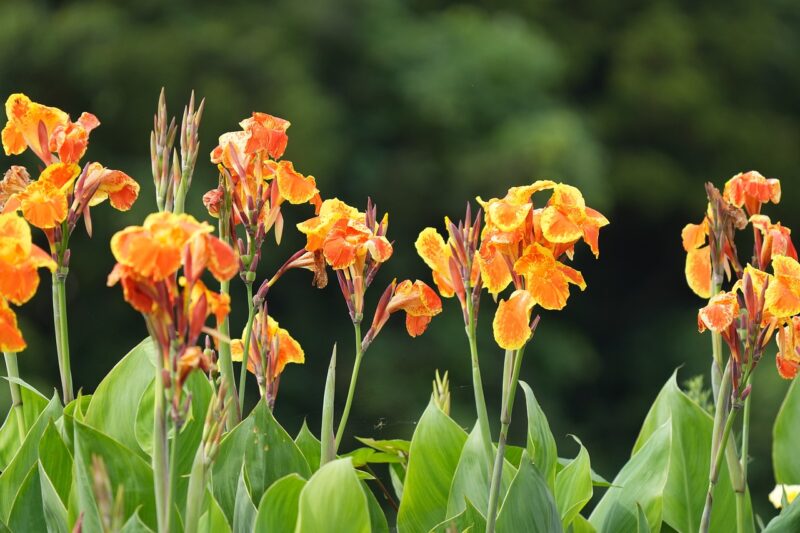
Cannas, though technically considered tender perennials, are often grown as annuals in cooler climates for their eye-catching foliage and bright yellow flowers. Their large, tropical leaves provide a stunning backdrop for the sunny blooms, making them a showstopper in any sunny garden.
These plants prefer full sun and well-draining soil with plenty of organic matter. Cannas thrive in consistently moist conditions, so regular watering is essential, particularly during dry spells. These plants can reach impressive heights, providing a dramatic touch to garden landscapes. The bold yellow flowers will bloom from mid-summer to fall, creating a vibrant display.
Lantana
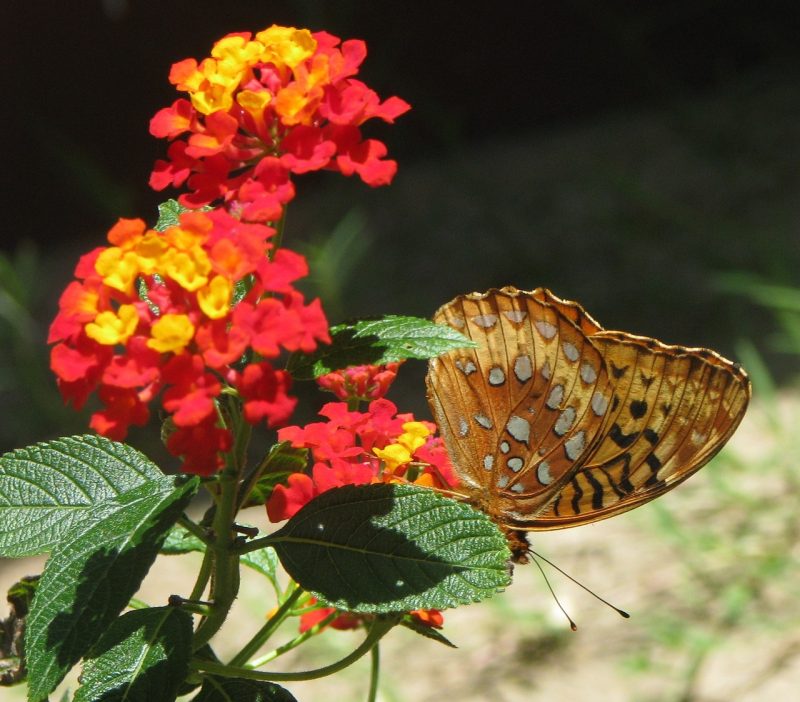
Lantana is a hardy, sun-loving annual that produces clusters of small, brightly colored flowers. Yellow lantana, with its cheerful blooms, is fantastic for attracting butterflies and other pollinators. These flowers thrive in hot, dry conditions, making them ideal for sunny gardens and xeriscaping.
To cultivate lantana, choose a location with well-drained soil and full sunlight. These plants are drought-tolerant once established, requiring minimal watering beyond initial planting. Prune lantana regularly to promote bushier growth and more blooms. With their long flowering period, yellow lantana will add color from early summer until the first frost.
Purslane
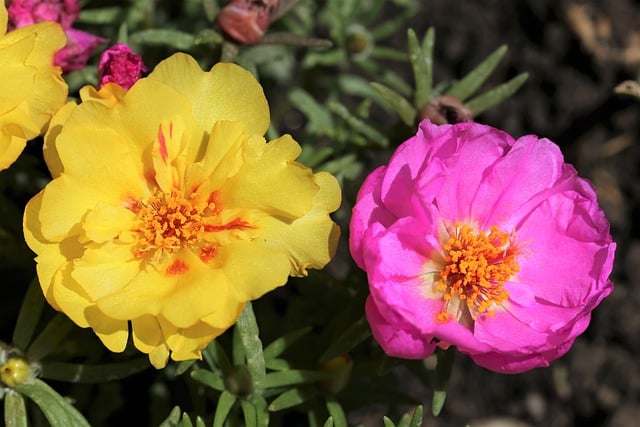
Purslane, a delightful succulent annual, offers yellow flowers that bloom all summer long in full sun. Known for its fleshy leaves and trailing growth habit, purslane is perfect for hanging baskets and ground cover. This edible plant adds beauty to gardens while also providing nutritious greens.
Plant purslane in well-drained soil and a sunny location for optimal growth. These hardy plants are drought-tolerant and thrive in poor soil, making them great for low-maintenance gardens. With their resilience and vibrant blooms, purslane is a cheerful addition to any yellow annual garden.
Nemesia

Nemesia, a charming annual flower with a lovely scent, brings a splash of yellow to gardens. These plants produce delicate, cheerful flowers that are perfect for sunny borders and containers. The compact growth habit makes them an ideal choice for both small gardens and larger landscapes.
To grow nemesia, plant them in well-drained soil that retains some moisture. They flourish in sunny spots with some afternoon shade, especially in hotter climates. Regular deadheading will extend their flowering season, allowing these beautiful yellow blooms to grace your garden from spring through early fall.
African Daisy
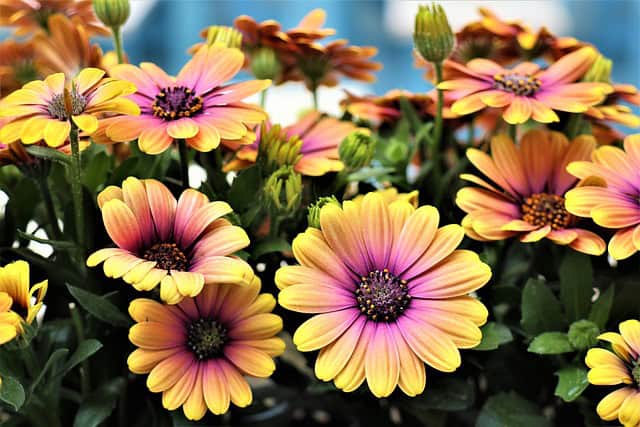
African daisies, also known as Osteospermum, are striking annuals with distinctive yellow petals that radiate cheer. These flowers thrive in hot, sunny conditions and are excellent for adding vibrant color to borders and containers. Their daisy-like appearance creates a charming, laid-back vibe in any garden setting.
When planting African daisies, choose well-drained soil with plenty of organic matter. They prefer full sun, so ensure they receive at least six hours of sunlight each day. Water them moderately, allowing the soil to dry out between watering. With a regular dose of fertilizer, African daisies will reward you with abundant blooms that brighten up your outdoor space.
Yellow Zinnia

Zinnias are a favorite among gardeners for their ease of care and stunning blooms. With their vibrant yellow varieties, zinnias can create a striking visual impact in any sunny garden. They are also excellent cut flowers, bringing a touch of sunshine indoors.
Plant zinnias in well-drained, fertile soil under full sun, providing at least six hours of light daily. Once established, these hardy annuals require minimal care, thriving on moderate watering and occasional deadheading to promote more blooms. Zinnias bloom throughout summer, producing a breathtaking display that draws admiration from all who pass by.
Black Eyed Susan
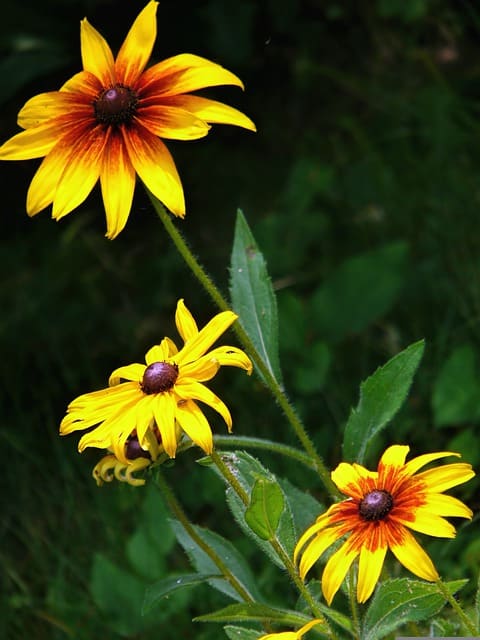
Black-eyed Susans are perennial favorites that bring warmth and beauty to sunny gardens. While they are typically perennial, many gardeners treat them as annuals to capitalize on their vibrant yellow blooms. These flowers are hardy, drought-tolerant, and fantastic for attracting pollinators.
To grow black-eyed Susans, choose a location with full sun and well-draining soil. Water them regularly during the establishment phase but allow the soil to dry out between waterings once established. In late summer and early fall, these flowers produce their classic yellow petals, making them a lovely addition to any garden.
Sunflowers

Sunflowers are the epitome of summer with their tall, sturdy stalks and big, cheerful yellow faces that follow the sun throughout the day. These iconic blooms can grow to impressive heights and serve as a stunning backdrop in any sunny garden, attracting birds and pollinators in the process.
Plant sunflowers in a sunny location with well-drained soil, ensuring they receive at least six to eight hours of sunlight daily. Water them regularly during dry spells to encourage strong growth. Sunflowers can be a fantastic option for children’s gardens, as they are easy to grow, creating an engaging and educational gardening experience.





